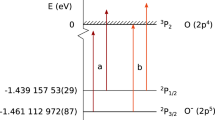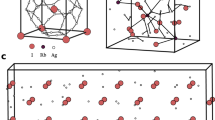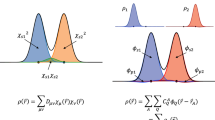Abstract
THE formation of negative ions by the surface ionization of gases on hot metallic filaments has been used as a means of determining electron affinities. In the method of Sutton and Mayer1, the total negative ion current and the total electron current were measured as functions of temperature, by means of a magnetron. This technique has been refined by Page2 and extended to more complex molecules3. In the absence of mass analysis, the process giving rise to the negative ions is postulated a priori and justified on the basis of reasonableness and internal consistency.
This is a preview of subscription content, access via your institution
Access options
Subscribe to this journal
Receive 51 print issues and online access
$199.00 per year
only $3.90 per issue
Buy this article
- Purchase on SpringerLink
- Instant access to full article PDF
Prices may be subject to local taxes which are calculated during checkout
Similar content being viewed by others
References
Sutton, P. P., and Mayer, J. E., J. Chem. Phys., 2, 145 (1934).
Page, F. M., in “Free Radicals in Inorganic Chemistry”, Amer. Chem. Soc., Adv. Chem. Ser., No. 36, 68 (1962).
Page, F. M., Trans. Faraday Soc., 56, 1742 (1960).
Zandberg, E. Ya., and Ionov, N. I., Usp. Fiz. Nauk, 57, 581 (1959).
Author information
Authors and Affiliations
Rights and permissions
About this article
Cite this article
HERRON, J., ROSENSTOCK, H. & SHIELDS, W. Negative Surface Ionization of Complex Molecules. Nature 206, 611 (1965). https://doi.org/10.1038/206611a0
Issue date:
DOI: https://doi.org/10.1038/206611a0



